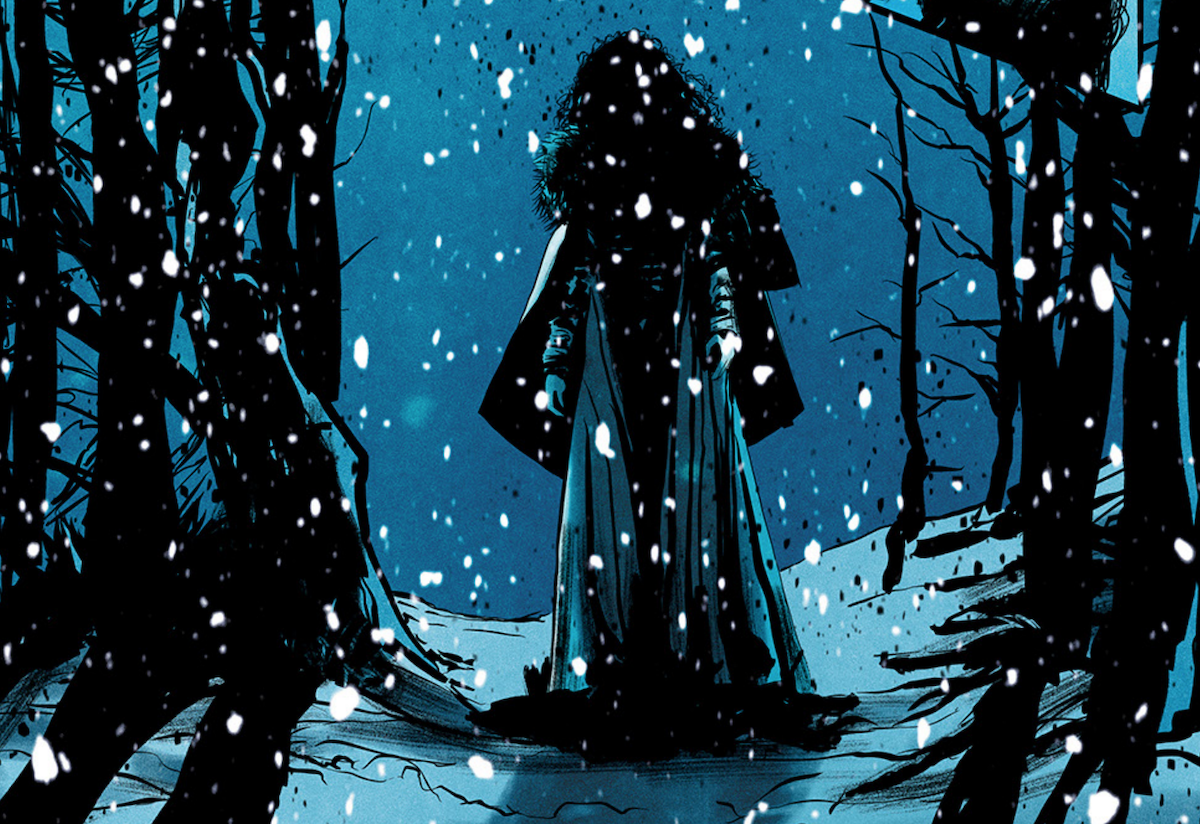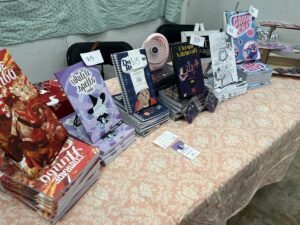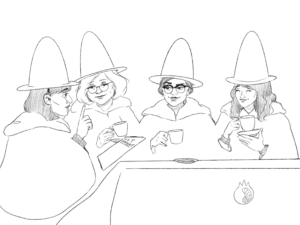Goth: Young Lovers at War is the first in a series of one-shot comics all about the aesthetics of goth culture. Written by Paul Allor with art by Seth Adams and colors by Josh Jensen, the series as a whole strives to connect two parts of gothic history (the cultural and historical) and, in its first issue, it largely succeeds.
In today’s world, there is a cultural understanding about what makes something “goth.” Cemeteries, bats, the color black, coffins, The Cure — all of these are, indeed, Very Goth. However, there’s a prior history to the word that can be forgotten: the history of the visigoths. These Goths were a nomadic people wandering around the Roman Empire sometime around the 5th-7th centuries. You wouldn’t be at fault for thinking these two types of goths couldn’t possibly be related to each other, and yet, the soon-to-be-released Goth: Young Lovers at War manages to connect the two across time with both its narrative and style.
This first issue takes things back to the beginnings (quite literally) of Goth culture, and with a tragic love story no less! In 237 AD, Visigoth lovers Dolphus and Gerda have a classic star-crossed relationship — they love each other, but she’s betrothed to someone else for the good of her people. Dolphus throws himself (and his angst about their whole affair) recklessly into battle, without really helping in any tangible/long-term way; whereas Gerda is literally trying to do what’s best for their community. She may be choosing to marry out of obligation, but it’s her choice, and it’s a practical one at that (and at least she’s not being self-destructive in the process). What ensues is a classic tragedy: to get Dolphus to chill the heck out for a minute instead of mindlessly killing himself in battle, a backstabbing has to take place — literally. What could be more goth than that??

Everything about this comic — the art, the story — cements the thesis of the Goth series right off the bat. The Goths of the past and the mall goths I went to high school with aren’t all that different; and it shows in the aesthetics and stylistic choices made in the comic. There are warm, moody colors, candles everywhere, and echoes of contemporary goth style in the character design. Gerda’s hair and style, and even Dolphus’s general aesthetic could be at home in any modern goth setting. As I’ve mentioned earlier, even the premise of this first one-shot is as goth as it gets: a doomed, star-crossed romance. The expressive, dark, sometimes splotchy art of Adams lends itself well to a dark romance. Be prepared for panels that immerse you into the Mood of it all, and that look like they’d be happy at home on the cover of any goth album of the past thirty years.
The story is a classic tragedy without being too cliched. I enjoyed Gerda’s slightly detached, practical, bad bitch attitude, namely her stone cold wedding night one-liner. In the throes of passion, her new husband tells her, “I’m glad you are mine.” Her reply? “I know.” [cue bad bitch music]

Since it’s a standalone comic that is also part of a limited series, the story of Gerda and Dolphus ends here, but there are no real clear-cut answers — just some vaguely tragic vibes about their love and where it’s headed. However, I appreciated the moodiness of that ambiguity and found it fitting. I especially loved Gerda’s stern, but still tender narration about her situation and the sacrifices she has to make for the greater good. It all makes for a stark, soft, and somewhat tragic story that’s a fine start for any series about the moodiest subculture on the planet.
While this was just a taste of the remainder of the series, it sets up the tone of the series well. “THE GOTHS WILL RETURN,” the last page reads, and I for one, can’t wait to welcome them back, melodrama and all.




